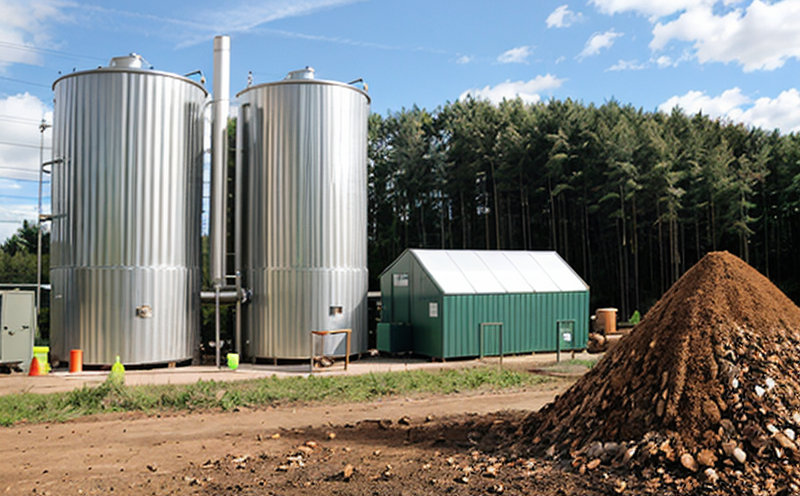EN 15414 Moisture Content in Refuse-Derived Fuels
The European Standard EN 15414:2009 outlines the methodology for determining the moisture content of refuse-derived fuels (RDF). RDF is a type of biomass fuel produced from waste materials, typically municipal solid waste. This standard is crucial in ensuring that the quality and performance of RDF meet the stringent requirements needed for efficient conversion into energy through waste-to-energy processes.
Compliance with EN 15414 ensures that RDF fuels are suitable for combustion in power plants, cement kilns, or other industrial facilities. The moisture content is a critical parameter as it directly impacts the calorific value and thus the energy yield of the fuel. High moisture content can lead to reduced efficiency and increased emissions during combustion processes.
The standard specifies that samples should be taken from representative batches of RDF for testing. These samples are then prepared according to the specified procedures, ensuring consistent results across different facilities. The accuracy of these measurements is vital as it affects not only operational costs but also environmental considerations.
Testing laboratories must use precise and reliable equipment such as ovens designed specifically for determining moisture content in biomass materials. The oven method involves drying the sample at a specific temperature over an extended period, followed by weighing before and after the drying process to calculate the moisture percentage accurately.
This service is particularly important given the growing emphasis on sustainable waste management practices globally. By ensuring that RDF meets international standards like EN 15414, facilities can optimize their processes for maximum energy recovery while minimizing environmental impact. This aligns perfectly with broader sustainability goals within the sector.
The importance of this testing cannot be overstated, especially as more countries adopt waste-to-energy strategies to address rising waste volumes and reduce landfill use. Understanding and adhering to such standards helps in maintaining high-quality fuel inputs that contribute positively to overall operational efficiency and environmental responsibility.
- International Acceptance: Compliance with EN 15414 ensures that RDF produced meets the quality criteria required by numerous countries across Europe, facilitating easier market access. This standard is recognized in several major markets including the UK, Germany, France, and others.
In summary, EN 15414 plays a pivotal role in ensuring that refuse-derived fuels are suitable for efficient conversion into energy. By providing accurate moisture content data, this standard supports sustainable waste management practices and contributes to the circular economy model. For facilities looking to optimize their RDF production processes or meet international regulatory requirements, this service is indispensable.
Why It Matters
The accurate determination of moisture content in refuse-derived fuels (RDF) is essential for several reasons that extend beyond mere compliance with standards. Understanding why moisture content matters so profoundly involves looking at both technical and economic aspects.
From a technical standpoint, the moisture content of RDF directly influences its calorific value—the amount of heat energy released during combustion. High levels of water in the fuel can lead to incomplete combustion, resulting in reduced efficiency and increased emissions of pollutants such as carbon dioxide (CO2) and nitrogen oxides (NOx). Efficient combustion is critical for maximizing the energy output from waste streams, thereby making the process more cost-effective.
Economically speaking, managing moisture content effectively reduces operational costs by minimizing fuel losses during processing. Properly dried RDF not only enhances its calorific value but also decreases handling and transportation costs associated with wet materials. Additionally, it helps in achieving better performance metrics which can translate into higher revenues through improved energy recovery rates.
Moreover, adhering to international standards like EN 15414 ensures that the product meets stringent quality controls set by regulatory bodies worldwide. This not only enhances brand reputation but also opens up opportunities for broader market participation. In an increasingly competitive landscape where environmental sustainability is a key factor, compliance with these standards can provide a significant competitive advantage.
Finally, ensuring accurate moisture content measurements supports broader sustainability goals within the sector. By optimizing RDF production processes to meet strict quality criteria, facilities contribute positively towards reducing greenhouse gas emissions and promoting cleaner energy solutions. This aligns perfectly with global efforts aimed at addressing climate change through sustainable waste management practices.
Scope and Methodology
The scope of the EN 15414 standard encompasses the determination of moisture content in refuse-derived fuels (RDF) using an oven-based drying method. This method involves several steps to ensure accurate results, each critical for producing reliable data.
The first step is sampling. Samples must be taken from representative batches of RDF according to predefined guidelines to avoid bias and ensure consistency across different production runs. Once collected, samples undergo preliminary conditioning where they are left undisturbed under controlled conditions to reach equilibrium moisture content (EMC).
Following conditioning, the samples are weighed accurately using precise scales suitable for small mass measurements. They are then placed in ovens designed specifically for drying biomass materials. These ovens operate at temperatures ranging between 105°C and 110°C, ensuring effective evaporation of water without causing significant degradation of the fuel material.
The samples remain in the oven until they reach a constant mass, indicating that all residual moisture has been removed. At this point, they are weighed again to determine the weight loss due solely to evaporation. This value is used along with the initial sample weight to calculate the percentage moisture content according to the formula provided in EN 15414.
This process ensures high accuracy and reproducibility of results. However, it requires careful attention to细节已提供





